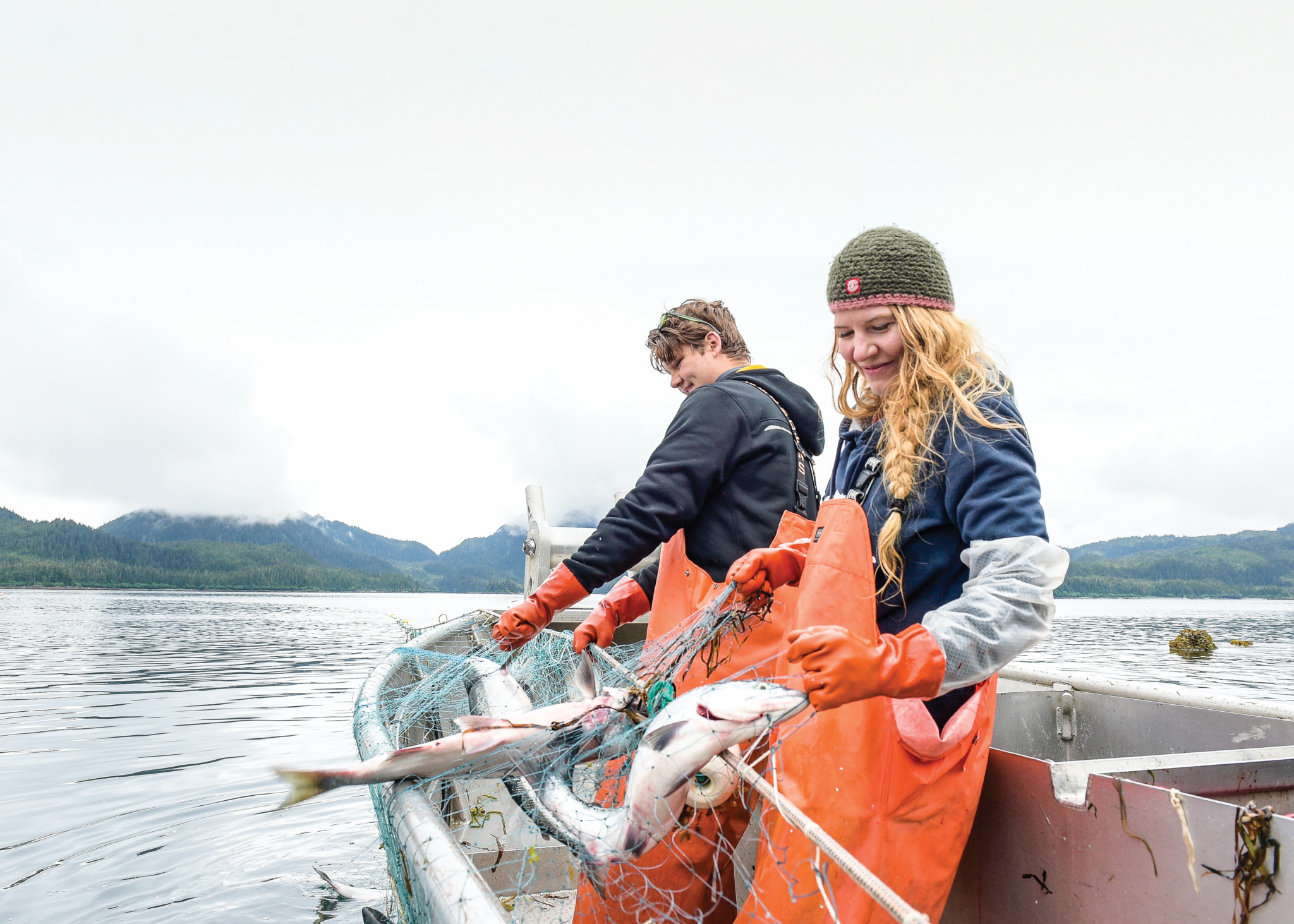Fifty percent of people involved in global seafood production are women. But you may not know it because few women occupy leadership positions in the sector and seldom participate in critical discussions and decision-making about precious fisheries resources.
Seafood and Gender Equality was founded in 2020 to address a critical need for gender equality in the seafood sector, build women’s empowerment, and encourage the industry to evolve into a more diverse, inclusive and equitable career choice for people of all genders. According to the U.S. Agency for International Development, gender equality means that the different behavior, aspirations, and needs of women and men are considered, valued and favored equally.
Women play a significant role in U.S. fisheries and can be found fishing from Alaska’s Bristol Bay to the Gulf of Maine, and they are particularly concentrated in pre- and post-harvest activities. Women in U.S. fisheries have been celebrated by organizations, such as the Alaska Seafood Marketing Institute in its Strong at Sea campaign and in online publications like MarthaStewart.com.
While there is much to celebrate, the information on how many women make a career in this industry and how they participate is spotty, difficult to find, and not updated regularly. But we know that men continue to dominate.
“Knowing how women participate directly in fishing and within fishing families and communities is critical to predicting and understanding responses to fishery changes — from individuals, to families, all the way up to communities,” said Marysia Szymkowiak, lead author of a recent NOAA study on women’s participation in global fisheries.
Lack of gender-disaggregated data and information around women’s participation in this industry is a big issue. Without it, we cannot develop equitable solutions to address the many challenges that face the industry.
In an announcement made in March 2020 on its website, the International Organization for Women in the Seafood Industry characterized women’s contributions to fisheries as “Ignored, Invisible, and Unrecognized,” a play on the abbreviation for Illegal, Unregulated, and Unreported fishing — IUU.
The organization highlights that the critical contributions of women in the seafood sector are invisible and ignored, which, at best, leads to policies and practices that ignore the needs of women in the industry and, at worst, leads to policies and practices that are harmful to women. The organization makes a call for all fisheries’ stakeholders at all levels to put as much effort and money toward fighting IIU as they have spent on IUU, and ensure that women are accounted for and their knowledge and contributions to the sector are valued.
In addition to the need to collect robust information to understand men’s and women’s roles in fisheries and the contributions women make to the sector, fishermen themselves often collect data about the fish they catch. Understanding where and how women participate in fisheries and supply chains and engaging them as data collectors could lead to increased information in understudied areas and strengthen future policy responses and improvement activities.
There will be a sea change in the exposure and evaluation of women’s participation in and contributions to fisheries in the very near future. The Food and Agriculture Organization, along with Duke University and WorldFish, is currently conducting an extensive study, including 58 country and territory case studies, called “Illuminating Hidden Harvests.” The authors aim to understand the contribution of small-scale fisheries to sustainable development.
The data and knowledge generated by the study, to be released in 2021, is expected to “contribute to more effective decision-making by policymakers and empower small-scale fishing actors and their communities and stakeholders to call for greater support and investment by their governments and partners.”
The most exciting feature of this study is that 28 gender experts from around the world were enlisted to help frame this research using gender as a cross-cutting theme. They will uncover, on a global scale, how women fish, where they fish, the gender breakdown of participants in small-scale fisheries and post-harvest activities, how women benefit from fisheries, and the challenges and opportunities for gender-inclusive fisheries governance.
The fishing industry has experienced an unprecedented level of disruption as a result of the covid-19 pandemic, and decisions are being made in real time about the industry’s future.
Seafood and Gender Equality is committed to contributing to the success of the seafood industry, and we support all efforts to understand and address the current and future needs of all people in the industry. To bounce back better, we must carve out a space to encourage diverse and underrepresented voices to participate in the development of equitable solutions, based on the best data we can possibly gather. We must collectively and collaboratively move toward a future where enthusiastic and qualified leaders of all genders are valued, recognized and ready to lead the seafood industry into a bright, post-covid-19 future.
Julie Kuchepatov is the founding director of Seafood and Gender Equality. She has worked for more than a decade on improving the environmental sustainability and social responsibility in global seafood production.







